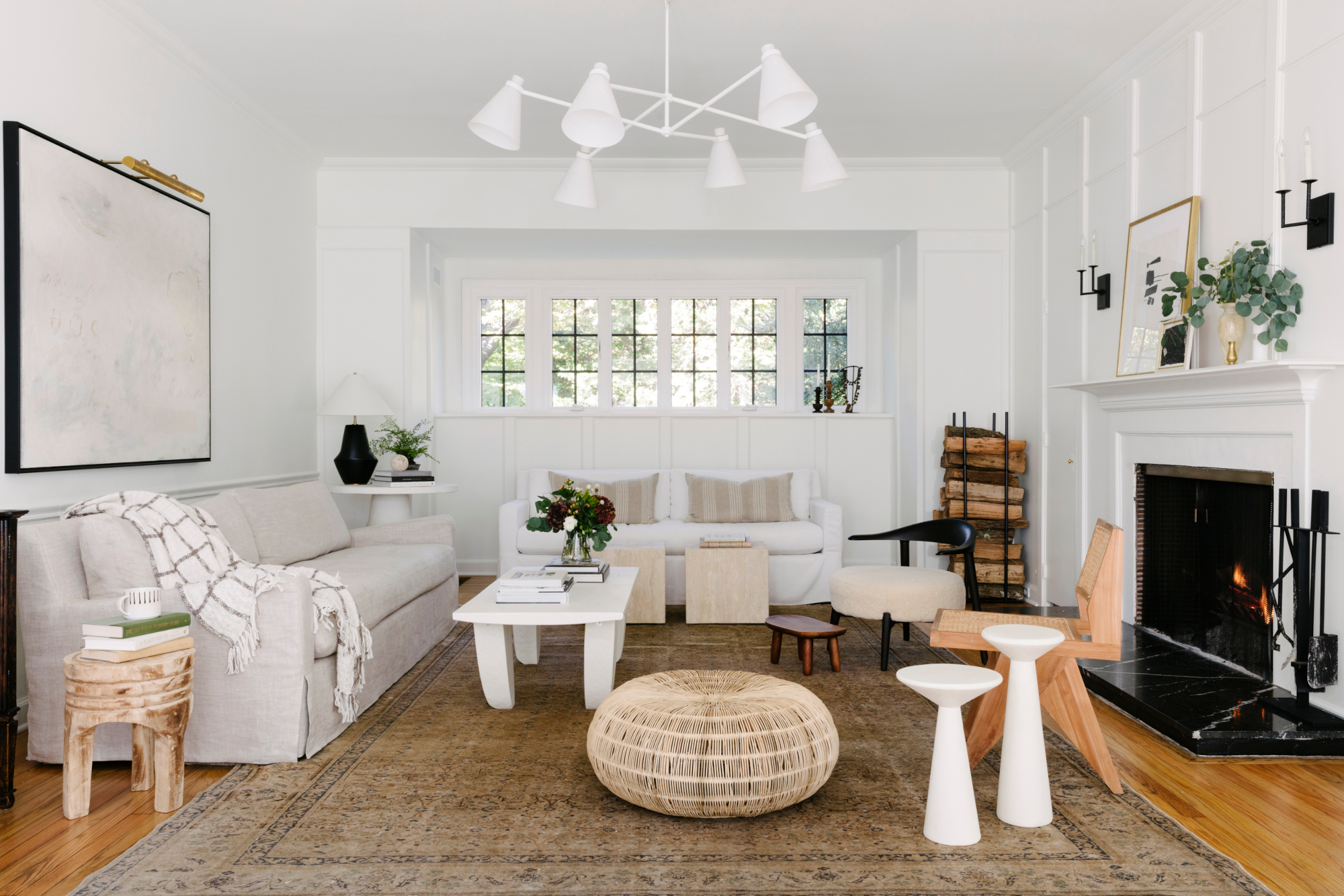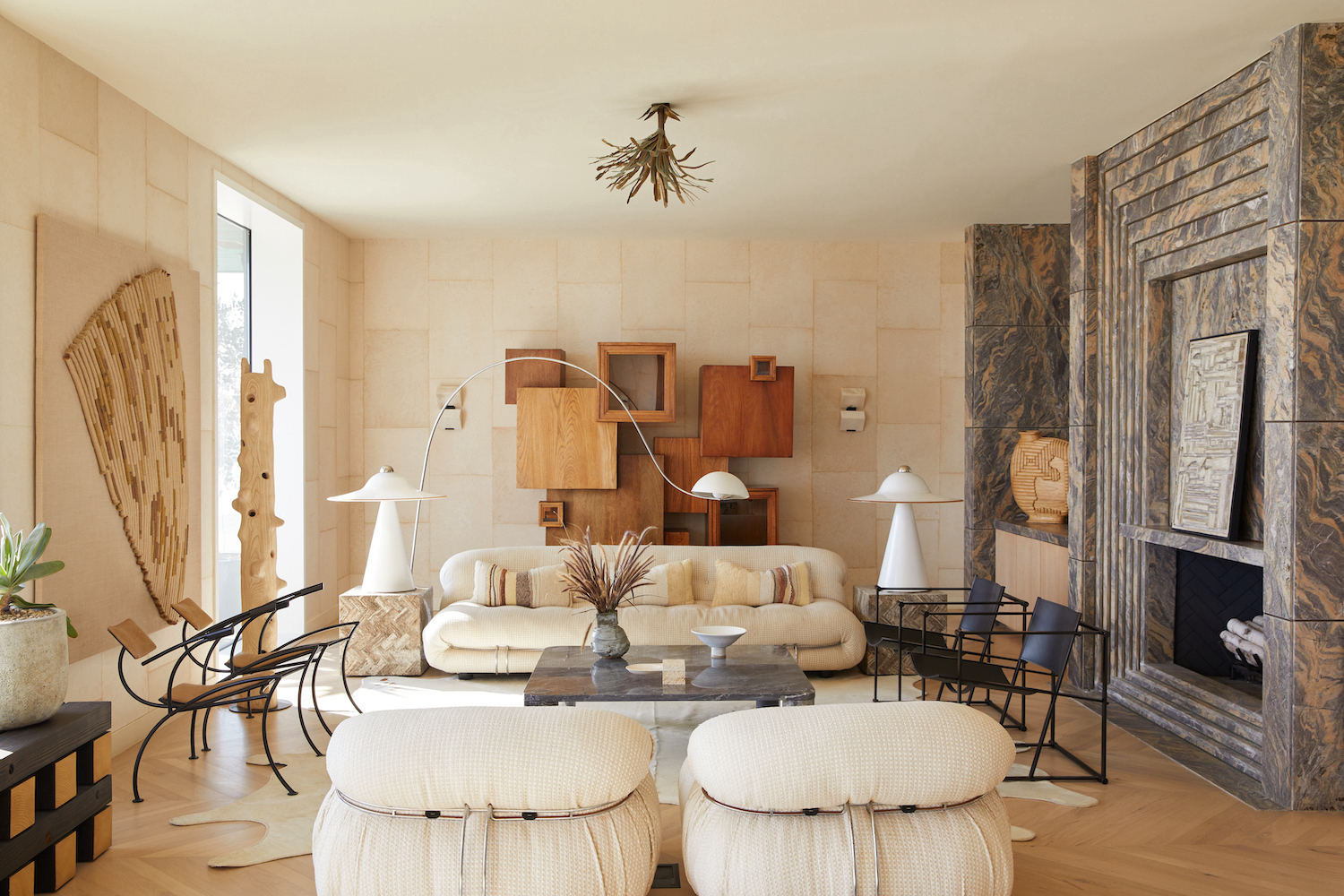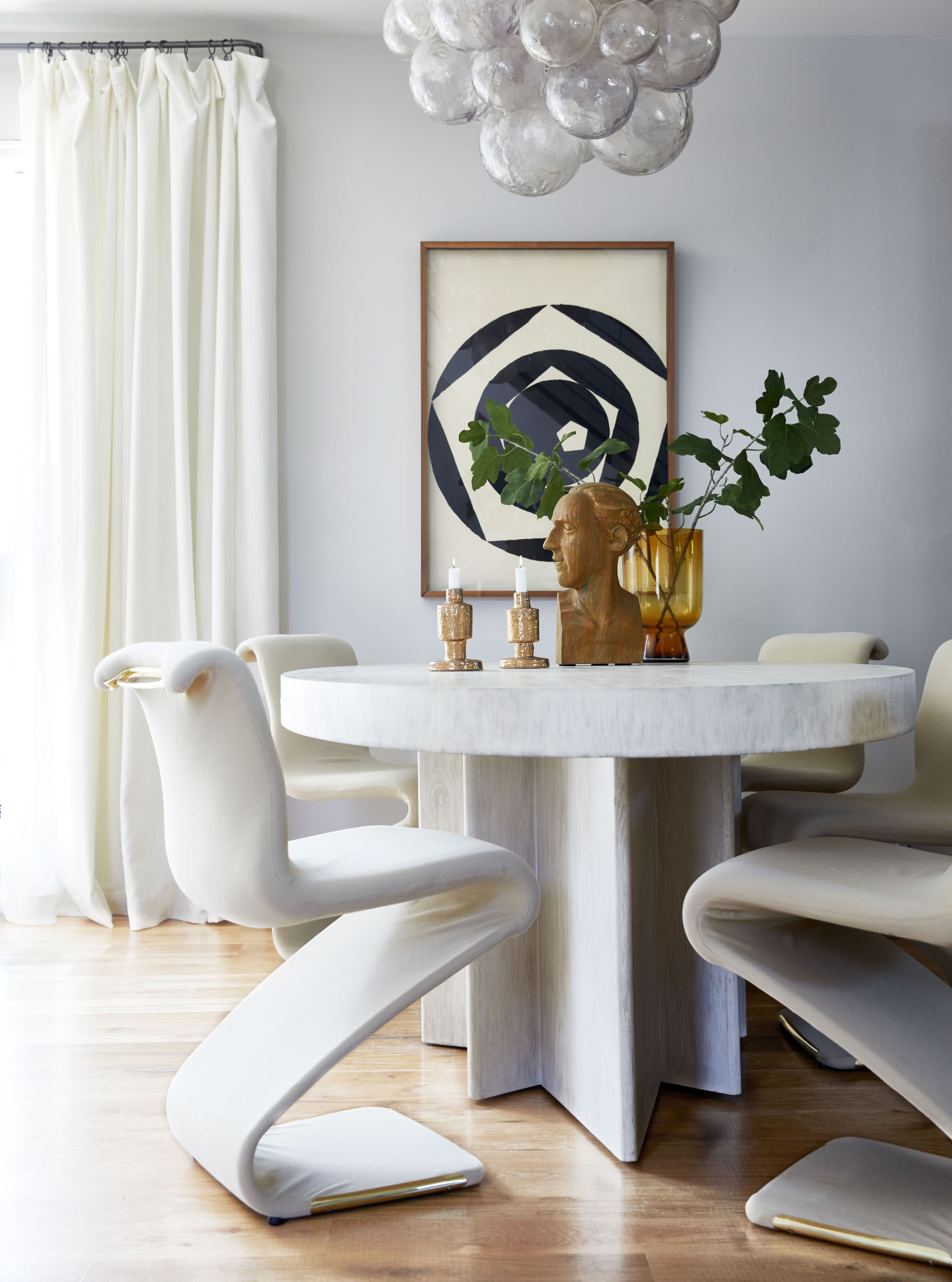Hosting over the holidays? Here’s how to arrange your seating for a better entertaining space
Get your living and dining room seating right and your hosting experience will be a lot smoother – designers tell us how


The festive season is upon us, and with family to visit, Christmas dinners to prepare and presents to wrap (or, ahem buy), dedicating time to nailing a seating layout might seem like a pipe dream.
But what if we told you that with a few interior design tweaks, a well-planned living or dining room layout could make your experience smoother if you’re planning on hosting over the holidays?
It turns out that seating can have a big impact on the enjoyment of your guests, as well as your own – whether your guest list is large or small. ‘There’s a famous quote commenting on the intimacy of large parties,’ says interior designer Lisa Sherry. ‘I can’t imagine a conversation amongst twenty guests: I call that a meeting. So I like to design spaces that naturally and organically support various pods of conversation. With sundry seating arrangements, even with a large group, conversations can ebb and flow within the space. These are my favorite parties.’
So, how do you create the perfect seating arrangements for festivities? We spoke to the experts to get their tips.

Ellen is Livingetc's print editor, and an experienced interiors journalist. For this piece, she spoke to interior designers to get their tips on creating the perfect seating arrangements for festive entertaining.
What is the best way to arrange a living room for festive entertaining?
Of course, most lounges are dominated by seating anyway – but the key is to rearrange your living room furniture so that the focus remains on conversation and relaxation. ‘An easy mistake when it comes to living room furniture is not including enough opportunities to sit and enjoy,’ says interior designer Pat Del Gavio.
‘I love creating conversational areas, whether it's placing two accent chairs with a side table between them, or sofas across from each other,’ says Tom Lawrence-Levy, interior designer at Natural Asthetik. ‘Avoiding having a TV as a focal point of the room also helps create conversation. Furniture should be arranged so people's eyes meet one another, not in a way that directs their eyes to a TV.’

Samantha Struck, interior designer at StruckSured Interiors, recommends adopting a circular layout around your focal point, be it a fireplace or a window. ‘The more circular seating you can provide, the better,’ she says. ‘Nestle a chair on each side of your focal point to avoid making your seating one directional. I tend to place larger furniture in a greater circle and break up the middle with chairs or ottomans that can be moved. Think a figure of eight, with the center being easily movable pieces to adjust based on need.’
For interior designer Marie Flanigan, using a coffee table as the focus is the best idea to try. ‘People always love a convenient spot to prop up feet or place a drink,’ she says. Doing so helps to create the chilled atmosphere you’re looking for. ‘Whether your preferred seating area includes multiple couches, arm chairs or a mix, a place to kick back and relax is always the best way to keep the conversation lively,’ she adds.
A quick trick is to use a living room rug to create niches. ‘It might sound simple, but one of the best ways to create a grounded conversational area is by anchoring the moment with a rug,’ says Heather Goerzen, designer at Havenly. ‘It pulls disparate pieces of furniture together and gives the space a sense of harmony.’

The distance between pieces can affect the feel of the room too, adds Heather. ‘While distance between seats always depends on the unique space itself, the goal is always the same – enough distance so people feel like they have a little breathing room, but close enough to feel connected and encourage conversation. Some designer rules of thumb: no less than three feet distance (for example, from a sofa to an accent chair), but no more than eight.’
‘With lots of family and friends coming together, the last thing you want is to be one chair short!’ adds Pat. ‘Arrange your existing furniture so that there is flow between standing and sitting arrangements. For example, you never want to have one chair placed alone. Either have several arranged close together so that guests can sit and chat, or purposefully leave an area empty of chairs so that people enjoying a drink, or just arriving, can converse while standing comfortably.’
How should you arrange seating in an open-plan space?
Obviously, a larger, open-plan space gives you more flexibility – but it can also be tricky to create an intimate atmosphere without expanses of empty floor space. The key, Marie Flanigan advises, is to think of the room in terms of multiple seating areas. ‘I love a traditional seating area with couches and armchairs, but it’s always lovely to create another vignette with four arm chairs around a smaller coffee table,’ she says. ‘Often, this space can be behind or off to the side of the main seating area.’
‘I love creating various seating areas, if a space is large enough, where people can have an area to sit when it's just a group of two and that feels more intimate, or having an area for a larger group,’ adds Tom Lawrence-Levy. ‘For a smaller area, sometimes a daybed in a living room and side table, or two accent chairs and a side table and floor lamp – all under an area rug – can create a cozy environment, while two larger sofa facing one another with a proper coffee table and an area rug can host larger groups.’

‘You want people to be able to easily converse, so if you are dealing with a large room, you might bring in additional chairs and ottomans for people to perch,’ says interior designer Meredith Owen. ‘A great way to elongate a large living room is to add chairs facing the opposite side of your living room sofa: this creates a nice seating area that feels more personal if you are visiting with just one other person (think morning coffee/evening cocktail). If your space is even larger than that, you can create two separate seating areas that complement each other (think hotel lobby).’
If you’re a numbers person, Lauren Sullivan, designer at Well x Design, has done the math on how to create a space that flows. ‘Set furniture placement so that individuals sit no more than eight to 10 feet apart,’ she says. ‘Keep circulation (or traffic flow) in mind with at least 30 inches between furniture you need to be able to walk around – and 14 to 18 inches between a sofa and coffee table.’
How can you encourage people to linger at the dining table after dinner?
‘First and foremost, make sure your diners have space to relax,’ says interior designer Irene Gunter of Gunter & Co. ‘This means getting the size of your dining table spot on. An extending model is often a solution, but it’s worth considering how the table will work within the room once it is fully extended. Will there be enough space to move around? Will the extended table dominate the space?’
Tom Lawrence-Levy recommends a round or curved table over a rectangular one – a dining table trend that's set to last. ‘I find that curves don't leave people feeling at the end of the table, or far from the rest of the conversation,’ he says. ‘When everyone can make eye contact it gets people speaking longer.’

Next, make sure your dining chairs are plentiful – and, crucially, comfortable .‘When you’re having guests for dinner you want them to sit comfortably for several hours,’ says Irene. ‘Upholstered dining chairs are usually the best option, and those with an upholstered backrest are always more comfortable than those without. A final tip: allow around 23-28" per place setting, as most comfortable dining chairs will be at least 21" wide.’
‘Consider adding a small fur on the back of some chairs or throw a lumbar pillow on your chairs – anything to give the user the feeling of comfort and warmth,’ says interior designer Shoshanna Shapiro. ‘Utilizing a rug under the table is also a good way to provide some comfort. Make sure to have soft lighting and use a dimmer switch or candlelight.’
Finally, some notes on styling. ‘As designers, we can't help but love a statement floral arrangement or oversized vignette, but be mindful of when and where you use these,’ says Heather Goerzen. ‘For example, a massive table centerpiece, while stunning, can obstruct view and halt conversation. Similarly, keep coffee table arrangements grounded and low, to maintain a clear line of sight for chatting and toasting.’
Be The First To Know
The Livingetc newsletters are your inside source for what’s shaping interiors now - and what’s next. Discover trend forecasts, smart style ideas, and curated shopping inspiration that brings design to life. Subscribe today and stay ahead of the curve.

Ellen is deputy editor of Livingetc magazine. She works with our fabulous art and production teams to publish the monthly print title, which features the most inspiring homes around the globe, interviews with leading designers, reporting on the hottest trends, and shopping edits of the best new pieces to refresh your space. Before Livingetc she was deputy editor at Real Homes, and has also written for titles including Homes & Gardens and Gardeningetc. Being surrounded by so much inspiration makes it tricky to decide what to do first in her own flat – a pretty nice problem to have, really. In her spare time, Ellen can be found pottering around in her balcony garden, reading her way through her overstacked bookshelf or planning her next holiday.
-
 My 10 Favorite Designs at Milan Design Week 2025 — Out of the Hundreds of Pieces I Saw
My 10 Favorite Designs at Milan Design Week 2025 — Out of the Hundreds of Pieces I SawThere is a new elegance, color, and shape being shown in Milan this week, and these are the pieces that caught my eye
By Pip Rich
-
 Iridescence Is Chrome’s More Playful, Hard-to-Define Cousin — And You're About to See It Everywhere
Iridescence Is Chrome’s More Playful, Hard-to-Define Cousin — And You're About to See It EverywhereThis kinetic finish signals a broader shift toward surfaces that move, shimmer, and surprise. Here's where to find it now
By Julia Demer